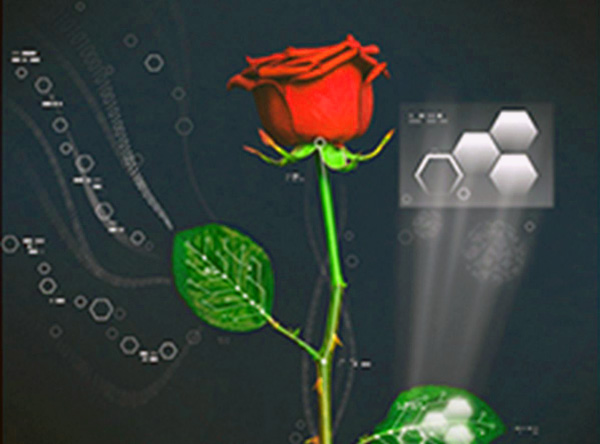Electronic Circuits Successfully Inserted Inside Plants
![]() Print this Article | Send to Colleague
Print this Article | Send to Colleague
According to a report published late this past month (November 23) by the Ledger Gazette, Nashua, N.H., USA, the electronic rose is "yet another wonderful development in the field of living technologies – hybrids of wetware and hardware." This was the description given by Andrew Adamatzky to the online newspaper, a professor of unconventional computing at the Bristol Robotics Laboratory in the U.K., who has experimented in the past with applying voltage to lettuce seedlings.
The "cyborg rose" was developed by a team of researchers led by Magnus Berggren, professor of Organic Electronics at Linköping University (Linköping, Sweden), and director of the Strategic Center for Organic Bioelectronics – a Swedish cooperative group from Linköping University, Karolinska Institute (Solna), Acreo (Kista), and the KTH Royal Institute of Technology (Stockholm).
The research team reported that this is the first successful application in which roses and electronic circuitry meet in a scientific experiment. This allows the research team to demonstrate and manipulate organic processes using electronic functions. They are now theoretically able to combine the electrical signals with the plant’s chemical processes.
The research team reported that this is the first successful application in which roses and electronic circuitry meet in a scientific experiment. This allows the research team to demonstrate and manipulate organic processes using electronic functions. They are now theoretically able to combine the electrical signals with the plant’s chemical processes.
After cutting the stems of the rose, lead author of the study, Eleni Stavrinidou, placed them into a solution containing PEDOT-S:H. PEDOT is a conjugated, positively charged polymer based on polythiophene. With the addition of this material, the plant's organic process helps to separate the event of distribution of the conducting and electronic materials from the event of film formation along the xylem walls. According to Berggren, when the team saw this type of "wire" formation, they immediately knew that they could create an electronic circuit within the rose. Inside, the polymer forms a thin film along the vascular system of the plant.

A scientist on the research team discovered how to use vacuum infiltration – a method commonly used in plant biology – to send another PEDOT variant together with nanocellulose fibers into the rose’s foliage to complete the circuit. This successful application could prove very helpful in the agricultural industry – imagine a tree with leaves that tell you the nitrogen or water level of the soil.
Among the team's other experiments, one required the "cyborg roses" to release semi-hazardous compounds that infected the plant itself but avoided the xylem to efficiently deliver water throughout the rose bush. The team noted that this could perhaps be used as a way of tapping energy from plants without having to kill them. In fact, it might also be possible in the future to closely monitor plant functions, as well as various nutrient concentrations.
The circuitry could also make it much easier to measure changes in the environment, so that optimal amounts of energy and water can be transmitted. The sugar that is produced in the leaves is converted by the enzyme; they deliver a charge to the electrode. The team is now hopeful they can collect that charge in a biofuel cell. They introduced this polymer in the stems of roses by soaking them in derivatives of the solution and recorded the results.
However, what is otherwise a weakness of organic electronics – the cold and the wet – is solved by the plant when it encapsulates this polymer, essentially protecting it from wind and weather. The team now has the ongoing ability to influence the various substances and their concentrations in the plant to regulate its growth and development. That enabled the team to remotely manipulate the material within the leaves, changing their color between lighter and darker patterns.
Since the 1990s, Magnus Berggren has also been researching the potential of printing electronics on paper – a flexible and sustainable medium that could drastically change the nature of electronics from having to be rigid and difficult to recycle.


